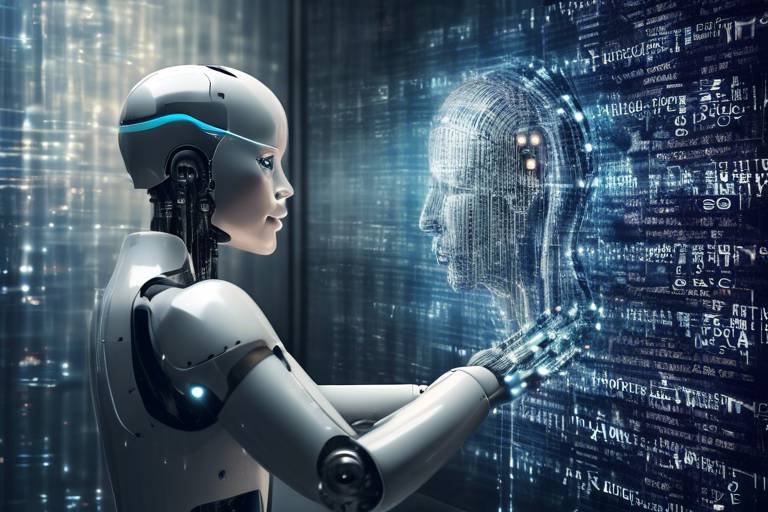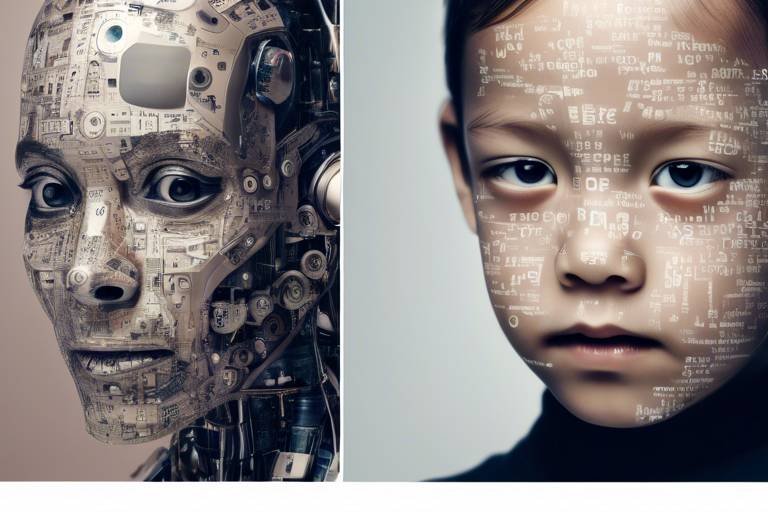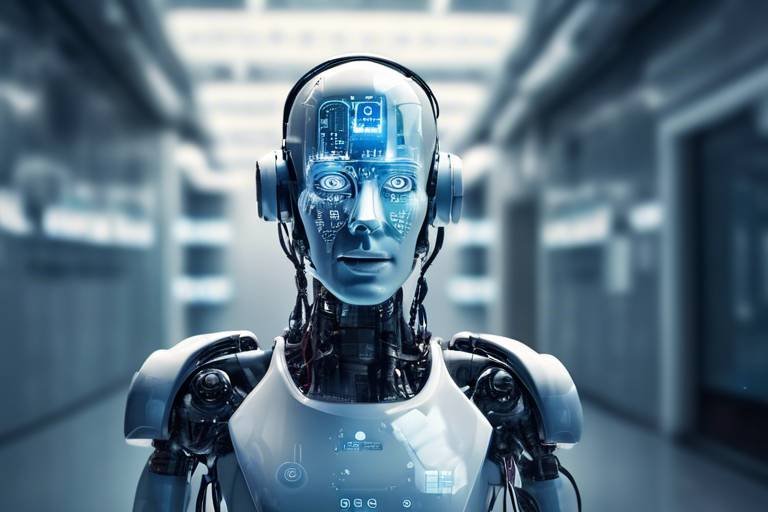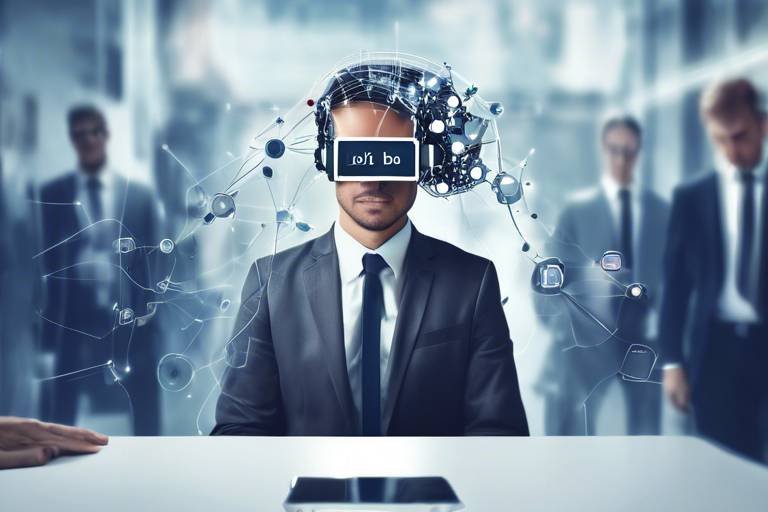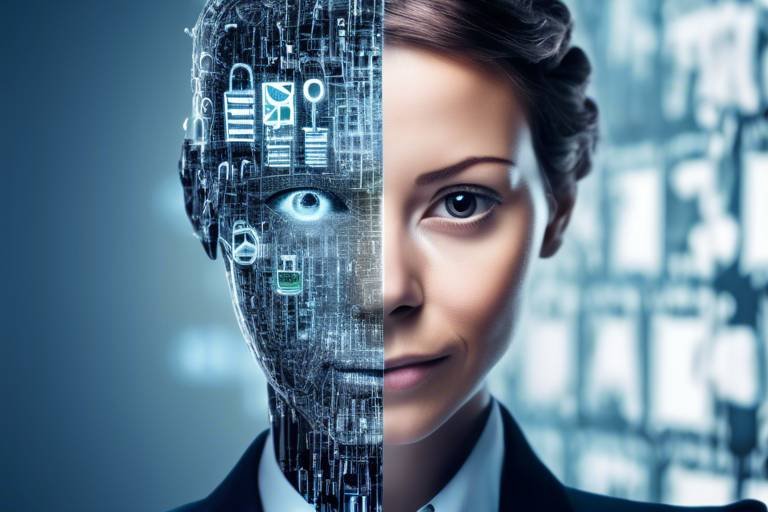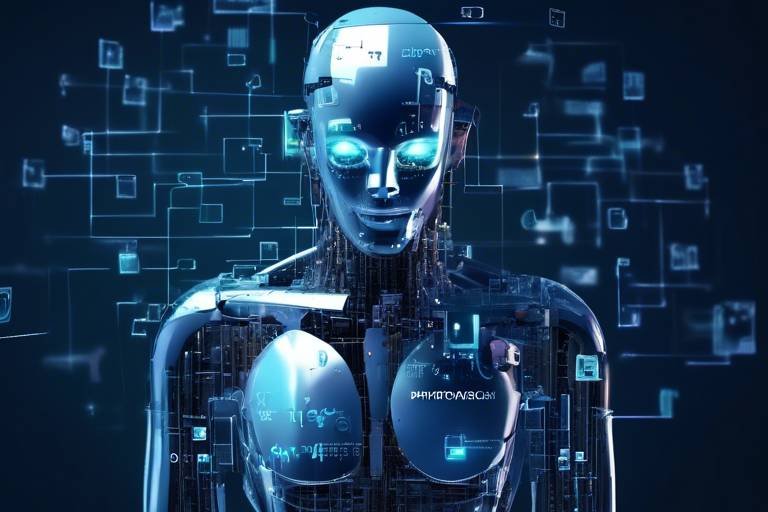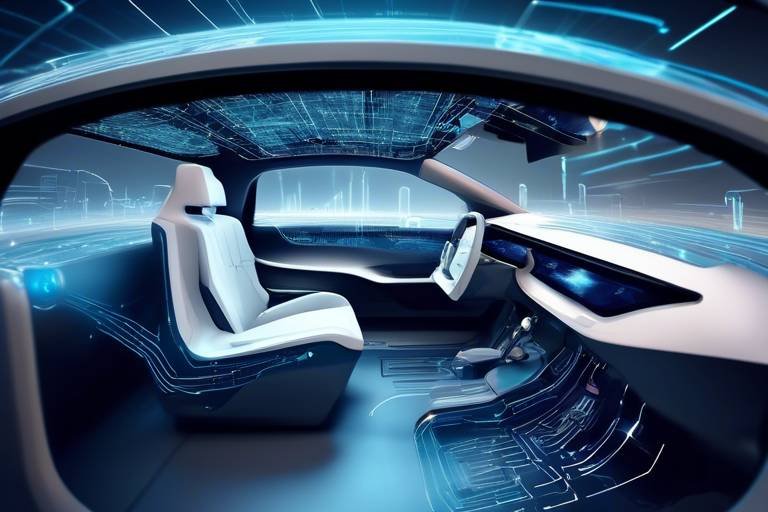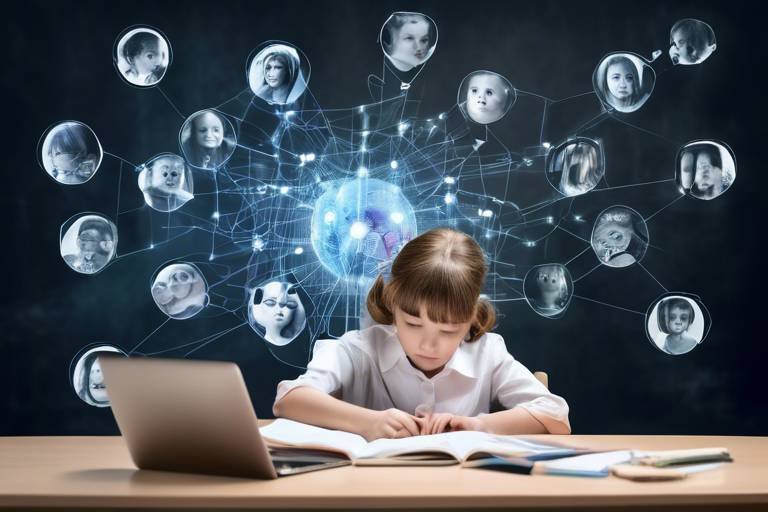AI’s Potential in Customized Learning Experiences
In today's rapidly evolving educational landscape, the integration of artificial intelligence (AI) has emerged as a game changer, offering unprecedented opportunities for creating customized learning experiences. Imagine a classroom where each student receives tailored instruction that aligns perfectly with their unique learning style, pace, and interests. This is not a distant dream; it is becoming a reality as AI technologies reshape how we approach education. By harnessing the power of AI, educators can develop personalized pathways that enhance student engagement and improve learning outcomes. The potential of AI to transform education is immense, and its impact can be seen in various aspects of the learning experience.
At the core of this transformation is the concept of personalized learning. This approach moves away from the traditional one-size-fits-all model, recognizing that each student has distinct needs and preferences. With AI, we can analyze vast amounts of data to understand individual student behaviors, strengths, and areas for improvement. This enables the creation of customized learning plans that adapt in real-time, ensuring that students remain engaged and motivated throughout their educational journey. The result? A more effective learning environment that not only boosts academic performance but also fosters a love for learning.
AI-powered tools facilitate this personalized experience in numerous ways. For instance, adaptive learning technologies can modify content and assessments based on a student’s performance, providing them with the right level of challenge. This is akin to having a personal coach who knows exactly when to push you harder and when to ease off, ensuring that you stay on track without feeling overwhelmed. Furthermore, AI systems offer data-driven insights that empower educators to make informed decisions about instructional strategies. By understanding learning patterns and trends, teachers can tailor their approaches to meet the diverse needs of their students.
Moreover, the introduction of real-time feedback mechanisms through AI allows students to receive immediate responses to their work. This instant feedback loop is crucial in helping learners identify their strengths and weaknesses, fostering a more responsive and supportive learning environment. Imagine a student working on a math problem; with AI, they can receive hints and tips as they progress, guiding them toward the correct solution without having to wait for the next class. This immediacy not only enhances learning but also builds confidence.
AI-powered tutoring systems further amplify the potential for customized learning experiences. These systems provide personalized assistance outside the classroom, reinforcing concepts and offering additional support tailored to each student's needs. For instance, if a student struggles with a particular topic, an AI tutor can offer targeted resources and practice exercises, helping them master the material at their own pace. This level of personalized attention is invaluable, especially in a world where classroom time is often limited.
As we delve deeper into the potential of AI in education, it's essential to acknowledge that while the benefits are significant, there are also challenges and considerations that must be addressed. The ethical implications of AI, particularly regarding data privacy and the equitable distribution of technology, cannot be overlooked. As we embrace these innovations, it is crucial to establish guidelines that protect student data and ensure that all learners have access to the resources they need.
In conclusion, the potential of AI to create customized learning experiences is vast and transformative. By leveraging AI technologies, we can pave the way for a more engaging, effective, and inclusive educational landscape. As we move forward, it is essential to remain mindful of the challenges that accompany these advancements, ensuring that we harness the power of AI responsibly and ethically.
- What is personalized learning?
Personalized learning is an educational approach that tailors instruction to meet individual student needs, preferences, and interests, allowing for a more customized learning experience. - How does AI contribute to personalized learning?
AI contributes by analyzing data to understand student learning patterns, providing real-time feedback, and offering adaptive learning technologies that adjust content based on performance. - What are the ethical concerns regarding AI in education?
Ethical concerns include data privacy, the responsible use of student information, and ensuring equitable access to AI technologies across diverse student populations. - Can AI tutoring systems replace traditional teachers?
AI tutoring systems are designed to complement traditional teaching, providing additional support and reinforcement, but they cannot replace the essential human elements of teaching.

Understanding Personalized Learning
Personalized learning is not just a buzzword; it's a transformative approach to education that tailors the learning experience to meet each student's unique needs, preferences, and interests. Imagine walking into a classroom where every student is engaged, challenged, and supported at their own level—sounds like a dream, right? But this is the reality that personalized learning aims to create. By recognizing that every student learns differently, personalized learning provides a framework that allows educators to customize their teaching methods and materials to suit individual learning styles.
The significance of personalized learning in modern education cannot be overstated. In a world where information is abundant and learning opportunities are vast, a one-size-fits-all approach simply doesn’t cut it anymore. Students come from diverse backgrounds, possess varying skill sets, and have different motivations for learning. Here are a few reasons why personalized learning is essential:
- Enhanced Engagement: When students see that their learning experience is tailored to them, their motivation skyrockets. They are more likely to participate actively in their education.
- Improved Outcomes: Personalized learning can lead to better academic performance as students receive the support they need to succeed.
- Development of Critical Skills: By focusing on individual strengths and weaknesses, students can develop essential skills at their own pace, which can lead to a deeper understanding of the material.
Furthermore, personalized learning is not just about the content; it encompasses a holistic approach to education. This means considering emotional, social, and cognitive factors that influence how students learn. For instance, some students may thrive in collaborative environments, while others may prefer solitary study. Understanding these nuances allows educators to create a more inclusive and effective learning atmosphere.
In the realm of personalized learning, technology plays a pivotal role. With the advent of advanced educational tools and platforms, it is now possible to gather real-time data about student performance and preferences. This data can then be used to adjust teaching methods and materials dynamically, ensuring that every student receives the guidance they need. Think of it like a GPS for education—constantly recalibrating to find the best route for each learner.
In summary, personalized learning is about recognizing and valuing the individuality of each student. By embracing this approach, educators can foster an environment that not only enhances engagement and improves outcomes but also prepares students for a future where adaptability and critical thinking are paramount. It's an exciting time in education, and personalized learning is at the forefront of this revolution.

The Role of AI in Education
Artificial Intelligence (AI) is revolutionizing the educational landscape, transforming the way we teach and learn. Imagine walking into a classroom where every student's needs are met in real-time, where lessons adapt to individual learning speeds, and where teachers have the tools to provide personalized instruction. This is not a distant dream; it's happening now, thanks to AI technologies. By integrating AI into educational settings, we can enhance the learning experience, making it more efficient, engaging, and effective for everyone involved.
One of the most significant advantages of AI in education is its ability to support teaching and learning processes. AI can analyze student data and identify patterns that may not be immediately apparent to educators. For instance, if a student struggles with a specific concept, AI can highlight this issue and suggest tailored resources or interventions. This not only helps teachers address individual challenges but also allows them to focus on fostering a more dynamic classroom environment.
Adaptive learning technologies are at the forefront of this AI revolution. These systems utilize sophisticated algorithms to adjust content and assessments based on a student's performance in real-time. For example, if a student excels in mathematics but struggles with reading comprehension, the adaptive learning system can provide advanced math challenges while offering additional reading resources tailored to their needs. This personalized approach ensures that no student is left behind and that each learner can progress at their own pace.
In addition to adaptive learning, AI provides data-driven insights that are invaluable for educators. By analyzing vast amounts of data, AI systems can reveal trends in student performance, highlight areas where students may need extra help, and even predict future learning outcomes. This data empowers teachers to make informed decisions about instructional strategies, allowing them to create more effective lesson plans and interventions.
Another exciting aspect of AI in education is the introduction of real-time feedback mechanisms. Imagine a scenario where students receive instant feedback on their assignments, quizzes, or class participation. This immediate response helps students understand their progress and identify areas for improvement without waiting for a teacher's assessment. It creates a more responsive learning environment, where students feel supported and encouraged to take ownership of their learning journey.
Furthermore, AI-powered tutoring systems are emerging as powerful tools for students outside the classroom. These systems offer personalized assistance, allowing learners to reinforce their understanding of subjects at their convenience. Whether it's through interactive chatbots or sophisticated learning platforms, AI tutors can adapt to a student's unique learning style, providing explanations, resources, and practice problems that cater specifically to their needs. This level of personalized support can significantly enhance a student's academic performance and confidence.
However, it’s crucial to acknowledge that while AI holds immense potential, its integration into education must be approached thoughtfully. Educators must be equipped with the knowledge and skills to effectively utilize these technologies, ensuring that they enhance, rather than replace, the human elements of teaching. The goal is to create a harmonious blend of AI tools and traditional teaching methods, ultimately fostering an enriched learning experience for all students.
- What is personalized learning? Personalized learning is an educational approach that tailors instruction to meet individual student needs, preferences, and interests.
- How does AI improve student engagement? AI improves engagement by providing personalized content and real-time feedback, making learning more relevant and interactive for each student.
- Are there any risks associated with AI in education? Yes, there are concerns regarding data privacy, equity in access, and the need for teacher training to effectively implement AI tools.
- Can AI replace teachers? No, AI is designed to complement teachers by providing additional resources and insights, but the human aspect of teaching remains irreplaceable.

Adaptive Learning Technologies
Adaptive learning technologies are revolutionizing the way students engage with educational content. Imagine a classroom where each student is not just a number but a unique individual with distinct learning styles, paces, and preferences. This is precisely what adaptive learning aims to achieve. By utilizing sophisticated algorithms, these technologies tailor educational experiences to fit the specific needs of each learner. The result? A more personalized, engaging, and effective learning journey that keeps students motivated and on track.
At the heart of adaptive learning is the concept of real-time adjustment. As students interact with the material, the system continuously analyzes their performance and adapts accordingly. For instance, if a student struggles with a particular math concept, the technology can automatically provide additional resources or alternative explanations to help bridge the gap. This not only enhances understanding but also fosters a sense of autonomy and confidence in learners.
Several key features define adaptive learning technologies:
- Dynamic Content Delivery: Content is presented in a manner that aligns with the student's current knowledge level, ensuring they are neither overwhelmed nor bored.
- Personalized Assessments: Assessments are tailored to reflect individual progress, allowing for a more accurate measure of understanding and skill acquisition.
- Continuous Feedback: Students receive instant feedback on their performance, enabling them to identify areas for improvement and adjust their learning strategies accordingly.
Moreover, adaptive learning technologies can be incredibly beneficial for educators as well. By providing insights into each student's learning trajectory, teachers can make informed decisions about instructional strategies. This data-driven approach not only enhances the effectiveness of teaching but also allows for timely interventions for students who may be falling behind.
In a nutshell, adaptive learning technologies are not just a trend; they represent a fundamental shift in educational practices. By focusing on individual needs and leveraging data to inform instruction, these tools create a more inclusive and effective learning environment. The future of education is here, and it's personalized!
1. What are adaptive learning technologies?
Adaptive learning technologies are systems that adjust educational content and assessments based on individual student performance, providing a tailored learning experience.
2. How do these technologies benefit students?
They enhance learning by delivering personalized content, offering real-time feedback, and allowing for dynamic adjustments based on student needs, which keeps learners engaged and motivated.
3. Can teachers benefit from adaptive learning technologies?
Absolutely! These technologies provide valuable insights into student performance, enabling teachers to make informed decisions and implement timely interventions.
4. Are there any challenges associated with adaptive learning technologies?
Yes, challenges include ensuring data privacy, addressing equity in access, and the need for teacher training to effectively integrate these tools into the classroom.

Data-Driven Insights
In the ever-evolving landscape of education, have emerged as a game changer, particularly when it comes to enhancing personalized learning experiences. Imagine walking into a classroom where every lesson is tailored to meet the unique needs of each student. Sounds like a dream, right? Well, thanks to artificial intelligence (AI), this dream is becoming a reality. AI systems are capable of analyzing vast amounts of data collected from various educational interactions, providing educators with invaluable insights into student learning patterns.
By leveraging these insights, teachers can identify specific strengths and weaknesses in their students' understanding of subjects. For instance, if a student struggles with mathematical concepts but excels in reading comprehension, AI can highlight these areas, allowing educators to adjust their teaching strategies accordingly. This kind of targeted instruction not only boosts student engagement but also fosters a deeper understanding of the material.
Moreover, the data collected can be visualized through interactive dashboards that present trends and patterns in student performance. These dashboards can include metrics such as:
| Metric | Description |
|---|---|
| Engagement Levels | Tracks how actively students participate in lessons and assignments. |
| Assessment Scores | Analyzes performance on quizzes and tests to identify knowledge gaps. |
| Time on Task | Measures how much time students spend on learning activities. |
These metrics can help educators make informed decisions about instructional strategies, ensuring that they are meeting the diverse needs of their students. For example, if a significant number of students are scoring low on a particular assessment, it may signal the need for a review of the teaching methods or curriculum content. In this way, data-driven insights act as a compass, guiding educators toward more effective teaching practices.
Furthermore, AI's ability to provide real-time analytics means that adjustments can be made on the fly. Teachers can receive immediate feedback about how their students are performing, allowing them to pivot their strategies without delay. This responsiveness not only enhances the learning experience but also builds a more dynamic classroom environment where students feel supported and understood.
In conclusion, the integration of data-driven insights into education is not just about numbers; it's about creating a more personalized, engaging, and effective learning experience for every student. As we continue to embrace AI in educational settings, the potential for transforming how we teach and learn is limitless.
- What are data-driven insights? Data-driven insights refer to the information derived from analyzing data, which can help educators understand student learning patterns and improve teaching strategies.
- How can AI enhance personalized learning? AI can analyze individual student data to tailor instructional methods, provide real-time feedback, and identify areas needing improvement.
- What are some ethical considerations regarding data in education? Key ethical considerations include ensuring student privacy, obtaining consent for data usage, and avoiding biases in AI algorithms.

Real-Time Feedback Mechanisms
Imagine sitting in a classroom where the teacher can instantly tell if you grasp a concept or if you’re struggling. That’s the beauty of powered by artificial intelligence! These innovative tools are revolutionizing how students learn by providing immediate insights into their performance. Instead of waiting for a test score or a teacher’s comments days later, students can receive instant feedback on their understanding of the material. This immediate response not only boosts engagement but also empowers students to take charge of their learning journey.
The essence of real-time feedback lies in its ability to create a dynamic learning environment. For instance, AI systems can analyze a student's answers during a quiz and provide tailored suggestions for improvement right on the spot. This means if a student struggles with a particular math problem, the system can offer additional resources or practice problems tailored to that specific area. It’s like having a personal coach who knows exactly where you need to focus! This kind of support is invaluable, especially in subjects that build on previous knowledge, such as mathematics or languages.
Furthermore, real-time feedback mechanisms can significantly enhance the teacher's role in the classroom. They can quickly identify which students are excelling and which ones might need extra help. Instead of a one-size-fits-all approach, teachers can tailor their instruction to meet the diverse needs of their students. For instance, if a majority of the class struggles with a particular topic, the teacher can pivot and provide a more in-depth explanation or alternative teaching methods. This adaptability ensures that no student is left behind, fostering a more inclusive learning environment.
However, it’s essential to recognize that while technology can enhance learning, it should not replace the human element of education. The relationship between teachers and students is crucial, and real-time feedback should complement, not substitute, traditional teaching methods. The goal is to create a harmonious blend of technology and personal interaction, ensuring that students feel supported both by their peers and their educators.
In conclusion, real-time feedback mechanisms powered by AI are transforming the educational landscape. They provide immediate insights that enhance student engagement, empower personalized learning, and support teachers in delivering effective instruction. As we continue to embrace these technologies, the future of education looks brighter than ever, with endless possibilities for tailored learning experiences that meet the unique needs of each student.
- What are real-time feedback mechanisms?
Real-time feedback mechanisms are tools that provide immediate insights into a student's performance, allowing for quick adjustments in learning strategies.
- How do AI systems provide feedback?
AI systems analyze student responses during assessments and offer tailored suggestions for improvement based on their performance.
- Can real-time feedback replace teachers?
No, real-time feedback should complement traditional teaching methods, enhancing the educational experience without replacing the teacher's role.
- What are the benefits of real-time feedback?
Benefits include increased student engagement, personalized learning experiences, and improved instructional strategies for teachers.

AI-Powered Tutoring Systems
Imagine having a personal tutor available 24/7, ready to help you tackle challenging subjects and clarify confusing concepts. are revolutionizing the way students learn by providing tailored assistance that fits their unique needs. These systems utilize advanced algorithms and machine learning to analyze a student's performance, preferences, and learning style, allowing for a truly customized educational experience. But how exactly do these systems work, and what benefits do they bring to the table?
At the heart of AI-powered tutoring systems is the ability to deliver personalized learning at scale. Unlike traditional tutoring, which may only cater to a few students at a time, AI systems can engage thousands of learners simultaneously. They adapt in real-time, adjusting the difficulty of questions and the type of content presented based on how well a student is grasping the material. This means that if a student struggles with a specific topic, the system can provide additional resources and exercises tailored to that topic, ensuring they fully understand it before moving on.
Moreover, these systems are not just about providing answers; they encourage a deeper understanding of the subject matter. For instance, when a student answers a question incorrectly, the AI can analyze the mistake and offer hints or explanations that guide the student back on track, much like a human tutor would. This real-time feedback is invaluable, as it allows students to learn from their errors and reinforces their learning journey.
One of the standout features of AI tutoring systems is their ability to track progress over time. They collect data on each student's performance, creating a detailed profile that educators can use to identify strengths and weaknesses. This data-driven approach not only helps students but also empowers teachers to make informed decisions about instructional strategies. For example, a teacher can use insights from the AI system to adjust their lesson plans or provide targeted interventions for students who might be falling behind.
While the advantages of AI-powered tutoring systems are clear, it's essential to consider how they fit into the broader educational landscape. These tools can serve as a supplement to traditional classroom learning, providing additional support for students who may need it. They can also help bridge the gap for students in remote areas or those who may not have access to quality tutoring resources. In essence, AI-powered tutoring systems are not just a trend; they represent a significant shift in how education can be delivered, making learning more accessible and engaging for everyone.
- What are AI-powered tutoring systems? - These are educational tools that use artificial intelligence to provide personalized tutoring and support to students based on their individual learning needs.
- How do they adapt to a student's learning style? - AI tutoring systems analyze data from student interactions to tailor content and feedback that aligns with how each student learns best.
- Can these systems replace human tutors? - While they offer significant benefits, AI systems are designed to complement human tutoring, not replace it. They provide additional resources and support for students.

Challenges and Considerations
As we dive deeper into the realm of artificial intelligence in education, it's essential to address the that accompany this technological revolution. While AI holds immense potential to enhance personalized learning experiences, it also brings forth a myriad of concerns that educators, administrators, and policymakers must navigate. One of the primary challenges is the issue of data privacy. With AI systems collecting vast amounts of data on student performance, behaviors, and preferences, there is a pressing need to ensure that this information is handled responsibly and ethically. How can we protect sensitive student data while still leveraging it to improve learning outcomes?
Furthermore, the integration of AI in education raises equity concerns. Not all students have equal access to the necessary technology or internet connectivity, which can create disparities in learning opportunities. Imagine a classroom where some students are equipped with advanced AI tools, while others are left behind due to lack of resources. This digital divide can exacerbate existing inequalities, making it crucial for educational institutions to implement strategies that ensure all students have access to these transformative technologies.
Another significant consideration is the need for teacher training. As AI systems become more prevalent in the classroom, educators must be equipped with the skills to effectively integrate these tools into their teaching practices. This means not only understanding how to use AI technologies but also knowing how to interpret the data they provide. Professional development programs focused on AI integration can empower teachers to harness these tools effectively, ultimately enriching the learning experience for their students.
In addition to these challenges, we must also consider the ethical implications of AI in education. Questions surrounding the use of student data, consent, and the potential for bias in AI algorithms need to be addressed proactively. Establishing clear ethical guidelines for AI applications in education is paramount to fostering trust among students, parents, and educators alike. Without these guidelines, the risks associated with AI could overshadow its benefits, leading to hesitation in adoption.
In summary, while the potential of AI in education is vast, it is accompanied by challenges that require careful consideration. Addressing issues of data privacy, equity, teacher training, and ethical implications will be crucial in ensuring that AI serves as a tool for enhancing education rather than a source of division and concern. By proactively tackling these challenges, we can pave the way for a future where AI enhances learning for every student, regardless of their background or circumstances.
- What are the main challenges of integrating AI in education?
Some of the main challenges include data privacy concerns, equity in access to technology, the need for teacher training, and ethical implications regarding data usage. - How can we ensure equitable access to AI technologies?
Strategies such as providing funding for schools in underserved areas, offering subsidies for technology, and creating community programs can help bridge the digital divide. - What role do teachers play in the integration of AI in education?
Teachers are crucial in implementing AI tools effectively; they need training to understand how to use AI technologies and interpret the data to enhance student learning. - Why is data privacy a concern with AI in education?
AI systems collect sensitive data about students, which raises questions about how this data is stored, who has access to it, and how it is used.

Ethical Implications
The integration of artificial intelligence into education is not without its ethical dilemmas. As we advance into an era where AI plays a pivotal role in shaping personalized learning experiences, we must take a step back and consider the implications of such powerful technology. One of the foremost concerns is data privacy. With AI systems collecting vast amounts of personal information about students, from their learning habits to their performance metrics, the potential for misuse is significant. Imagine a scenario where sensitive student data is mishandled or falls into the wrong hands; the consequences could be devastating, affecting not just individual students but entire educational institutions.
Moreover, the question of informed consent arises. Are students and their guardians fully aware of how their data is being used? Are they given the choice to opt-out of data collection? These are critical questions that need addressing. Transparency in data usage policies is essential. Educational institutions must communicate clearly about what data is collected, how it will be used, and who will have access to it. Without this transparency, trust erodes, and the relationship between students and educational institutions could be severely compromised.
Another ethical consideration involves algorithmic bias. AI systems are only as good as the data they are trained on. If the data reflects societal biases, the AI can perpetuate these biases, leading to unfair treatment of certain student groups. For example, if an AI system is trained predominantly on data from one demographic, it may not accurately assess or support students from different backgrounds. This can lead to disparities in educational outcomes, further widening the achievement gap. Therefore, it is crucial to ensure that the data used to train AI systems is diverse and representative of all student populations.
To mitigate these ethical concerns, we can outline several key strategies:
- Implement Robust Data Protection Policies: Institutions should establish strict guidelines for data collection, storage, and sharing to protect student information.
- Ensure Transparency: Clear communication about data usage and AI processes can foster trust and accountability.
- Regularly Audit AI Systems: Continuous monitoring of AI algorithms can help identify and rectify biases, ensuring fair treatment for all students.
- Involve Stakeholders: Engaging students, parents, and educators in discussions about AI can lead to more ethical and informed decision-making.
In conclusion, while the potential of AI in education is immense, we must tread carefully. By addressing these ethical implications head-on, we can harness the power of AI to create a more equitable and effective educational landscape. The future of learning can be bright, but it requires a commitment to ethical standards and practices that prioritize the well-being of all students.
Q1: What are the main ethical concerns regarding AI in education?
A1: The primary concerns include data privacy, informed consent, algorithmic bias, and transparency in data usage.
Q2: How can educational institutions protect student data?
A2: Institutions can implement robust data protection policies, including strict guidelines for data collection, storage, and sharing.
Q3: Why is transparency important in AI applications in education?
A3: Transparency fosters trust between students and institutions, ensuring that stakeholders are aware of how their data is being used.
Q4: How can we ensure AI systems are fair to all students?
A4: Regular audits of AI algorithms and involving diverse stakeholders in the development process can help mitigate biases and promote fairness.

Equity in Access
When we talk about to AI technologies in education, we’re diving into a crucial conversation. Imagine a classroom where every student, regardless of their background, has the same opportunities to learn and thrive. This isn’t just a dream; it’s a necessity in our rapidly evolving educational landscape. However, achieving this equity is easier said than done. There are significant disparities that can hinder access to these innovative technologies, and understanding these barriers is the first step toward overcoming them.
One of the primary challenges is the digital divide. Not every student has access to reliable internet or modern devices, which can create a significant gap in learning opportunities. For instance, students in urban areas may have better access to technology than those in rural regions. This inconsistency can lead to a situation where some students benefit immensely from AI-powered learning tools, while others are left behind. To illustrate this point, consider the following table that highlights the disparities in technology access:
| Region | Access to Technology (%) | Average Internet Speed (Mbps) |
|---|---|---|
| Urban | 85% | 100 |
| Suburban | 75% | 50 |
| Rural | 50% | 10 |
This table clearly shows that students in rural areas are at a considerable disadvantage. To combat these inequalities, educational institutions and policymakers must work collaboratively to ensure that all students have access to the necessary technology and resources. This could involve initiatives like providing subsidized devices, enhancing internet infrastructure in underserved areas, and creating community programs that promote digital literacy.
Moreover, it's not just about access to devices and internet; it's about ensuring that educators are equipped to use these technologies effectively. Professional development programs can help teachers understand how to integrate AI tools into their teaching practices, making learning more engaging and personalized. When teachers are confident in using technology, they can better support their students, regardless of their backgrounds.
Equity in access also means recognizing and addressing the diverse needs of students. For example, students with disabilities may require specialized tools to fully benefit from AI-driven learning experiences. By ensuring that these tools are accessible, we can create a more inclusive environment where every student has the opportunity to succeed. Additionally, schools should actively seek feedback from students and parents to understand their needs and adjust their approaches accordingly.
In conclusion, achieving equity in access to AI technologies in education is a multifaceted challenge that requires a concerted effort from all stakeholders. By addressing the digital divide, investing in teacher training, and ensuring that all students have access to the necessary resources, we can create a more equitable educational landscape. After all, when we lift everyone up, we all rise together.
- What is equity in access in education? Equity in access refers to providing all students with the same opportunities to access educational resources and technologies, regardless of their background or circumstances.
- How does the digital divide affect students? The digital divide can create disparities in access to technology and the internet, leading to unequal learning opportunities for students in different regions or socioeconomic statuses.
- What can be done to improve equity in access? Improving equity can involve providing subsidized technology, enhancing internet infrastructure, and offering professional development for educators to effectively use AI tools.
Frequently Asked Questions
- What is personalized learning?
Personalized learning is an educational approach that tailors instruction to meet the individual needs, preferences, and interests of each student. It allows learners to progress at their own pace and focus on areas where they need the most support.
- How does AI enhance personalized learning experiences?
AI enhances personalized learning by using algorithms to analyze student performance and adapt content accordingly. This means that students receive customized resources and assessments that cater to their unique learning styles, making education more engaging and effective.
- What are adaptive learning technologies?
Adaptive learning technologies are tools that adjust educational content and assessments based on real-time data about student performance. These technologies ensure that learners receive the right level of challenge and support, promoting a more personalized educational journey.
- Can AI provide real-time feedback to students?
Yes! AI can facilitate real-time feedback, allowing students to instantly understand their progress and identify areas for improvement. This immediate response helps create a more responsive and engaging learning environment.
- What are AI-powered tutoring systems?
AI-powered tutoring systems are platforms that offer personalized assistance to students outside the classroom. They reinforce learning by providing tailored support, helping students grasp concepts better, and encouraging independent study.
- What challenges does AI face in education?
While AI has significant potential in education, there are challenges like data privacy concerns, equity in access to technology, and the need for proper teacher training to effectively integrate AI tools into the classroom.
- What are the ethical implications of using AI in education?
The use of AI in education raises ethical questions regarding data usage and student privacy. It is crucial to establish clear ethical guidelines to ensure that AI applications protect student information and promote equitable outcomes.
- How can we ensure equity in access to AI technologies?
Ensuring equitable access to AI technologies involves addressing disparities that may arise due to socioeconomic factors. Strategies include providing resources and training to underprivileged schools and communities to ensure all students benefit from AI advancements.






